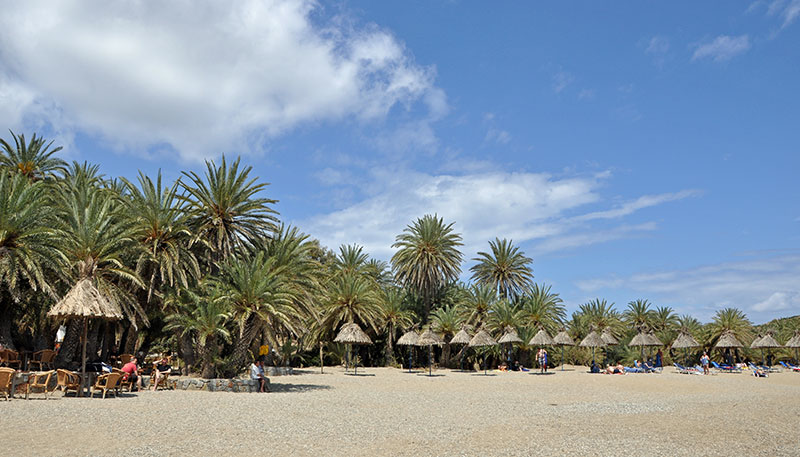Crete, the largest island in Greece, is celebrated for its diverse ecosystems, rich biodiversity, and stunning natural landscapes. As the world increasingly recognizes the importance of sustainable travel, Crete has embraced ecotourism, offering visitors the chance to explore its nature reserves while promoting conservation and supporting local communities. Ecotourism in Crete provides a unique opportunity to experience the island’s natural beauty in a way that is respectful to the environment and beneficial to its inhabitants.
The Importance of Ecotourism in Crete
Ecotourism focuses on responsible travel to natural areas, conserving the environment, and improving the well-being of local people. In Crete, ecotourism initiatives aim to protect the island’s unique flora and fauna, preserve its cultural heritage, and promote sustainable economic development. By participating in ecotourism activities, visitors can contribute to these goals while enjoying the island’s spectacular landscapes.
Key Nature Reserves in Crete
Crete boasts several nature reserves that are ideal for ecotourism. These protected areas offer a sanctuary for wildlife and a pristine environment for visitors to explore.
- Samaria Gorge National Park Samaria Gorge, one of the most famous gorges in Europe, is located in the White Mountains (Lefka Ori) of western Crete. This 16-kilometer-long gorge is a haven for hikers and nature enthusiasts. The park is home to rare species such as the Cretan wild goat (kri-kri) and a variety of endemic plants. Hiking through Samaria Gorge provides a close encounter with these species and the chance to appreciate the stunning geological formations. Park management implements strict visitor guidelines to minimize human impact and preserve the natural environment.
- Psiloritis Natural Park Located in central Crete, Psiloritis Natural Park encompasses the island’s highest peak, Mount Ida (Psiloritis), and its surrounding areas. The park is part of the UNESCO Global Geoparks Network, recognized for its geological heritage. Visitors can explore its diverse landscapes, including caves, gorges, and plateaus, while learning about the area’s geological history. The park promotes sustainable tourism practices and offers educational programs to raise awareness about the importance of conservation.
- Elafonisi Nature Reserve Elafonisi, located on the southwestern coast of Crete, is renowned for its pink sand beaches and crystal-clear waters. The area is a protected nature reserve, home to rare species such as the loggerhead sea turtle (Caretta caretta) and various migratory birds. Ecotourism activities in Elafonisi include guided tours, bird watching, and snorkeling. Visitors are encouraged to follow designated paths and respect wildlife habitats to ensure the preservation of this fragile ecosystem.
- Lassithi Plateau The Lassithi Plateau, situated in eastern Crete, is a unique agricultural landscape surrounded by the Dikti Mountains. The plateau’s fertile soil and abundant water sources have supported traditional farming practices for centuries. Ecotourism initiatives in the Lassithi Plateau focus on promoting sustainable agriculture and preserving local traditions. Visitors can participate in farm tours, hiking, and cycling, gaining insight into the region’s cultural and natural heritage.
- Vai Palm Forest Vai, located in eastern Crete, is home to one of Europe’s largest natural palm groves. The Vai Palm Forest is a protected area that offers a unique tropical landscape in the Mediterranean. The reserve is an important habitat for various species of birds and plants. Ecotourism activities in Vai include guided nature walks, bird watching, and educational programs about the ecological significance of the palm forest.
Ecotourism Activities and Experiences
Ecotourism in Crete encompasses a wide range of activities that allow visitors to connect with nature and support conservation efforts.
- Guided Nature Walks and Hikes Guided walks and hikes are a cornerstone of ecotourism in Crete. Experienced guides lead visitors through the island’s nature reserves, providing insights into the local flora, fauna, and geological features. These tours often include information about conservation efforts and the ecological importance of the areas being explored.
- Bird Watching Crete is a paradise for bird watchers, with numerous species of resident and migratory birds. Nature reserves such as Elafonisi and Vai offer excellent opportunities for bird watching. Guided bird watching tours help visitors identify various species and understand their behaviors and habitats.
- Sustainable Agriculture and Farm Tours Ecotourism initiatives in agricultural areas like the Lassithi Plateau focus on promoting sustainable farming practices. Visitors can tour organic farms, learn about traditional agricultural techniques, and participate in activities such as olive harvesting and cheese making. These experiences highlight the connection between sustainable agriculture and environmental conservation.
- Marine Conservation and Snorkeling Crete’s coastal areas, such as Elafonisi, offer opportunities for marine conservation activities and snorkeling. Visitors can explore underwater ecosystems, learn about marine life, and participate in beach clean-up initiatives. These activities promote the protection of marine habitats and raise awareness about the impact of human activities on the ocean.
The Benefits of Ecotourism for Local Communities
Ecotourism provides significant benefits for local communities in Crete. By promoting sustainable tourism practices, ecotourism helps preserve the island’s natural and cultural heritage. It also supports local economies by creating jobs and generating income for residents. Community-based ecotourism initiatives empower local people to take an active role in conservation efforts and share their knowledge and traditions with visitors.
Conclusion
Ecotourism opportunities in Cretan nature reserves offer a meaningful way to explore the island’s diverse landscapes and contribute to conservation efforts. From hiking through the dramatic Samaria Gorge to participating in sustainable agriculture tours in the Lassithi Plateau, visitors can engage with nature and support local communities. By choosing ecotourism, travelers can enjoy the beauty of Crete while helping to preserve its unique ecosystems and cultural heritage for future generations.


